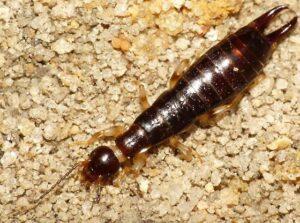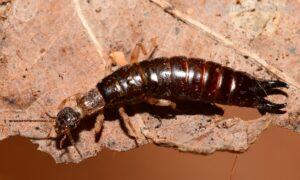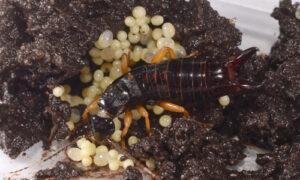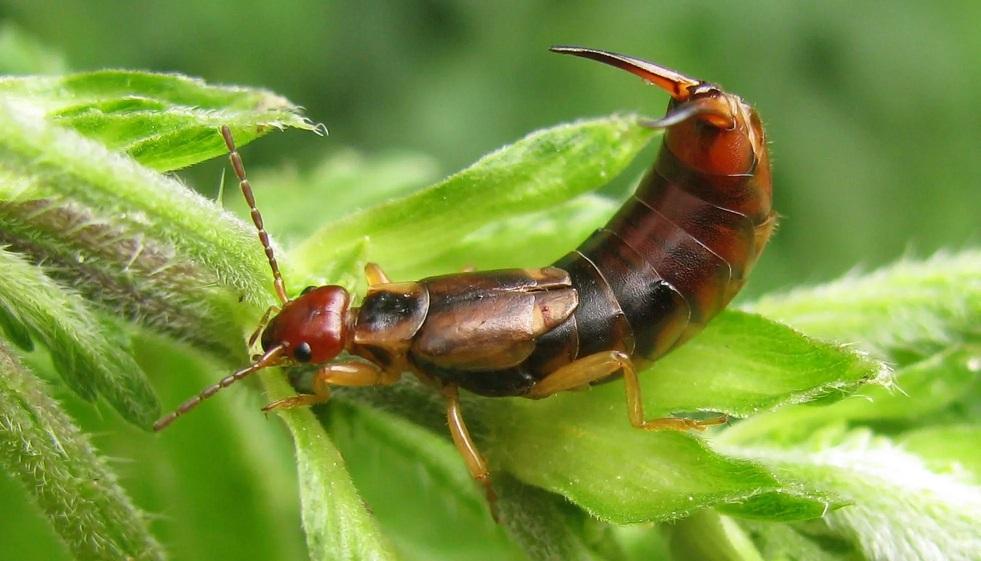Ringlegged Earwig (Euborellia annulipes)
Updated on
17/11/2022The ring-legged earwig of the Anisolabididae family was first described in 1847 by the French entomologist Hippolyte Lucas in 1847. They have been known to inhabit parts of the US since 1902. Their population eventually spread to Canada and throughout the Americas from Central to South and other continents, including Asia and Europe. A ring-like band seen around the region of their femur accounts for the earwig’s common name, the ring-legged earwig.
Scientific Classification
- Class:Insecta
- Order:Dermaptera
- Family:Anisolabididae
- Genus:Euborellia
- Species:E. annulipes
Conservation Status
Description
These earwigs have a dark brown body and reach to a length of around 12-16 mm. They also have pale brown legs and dark bands surrounding their femur and sometimes tibia. Their antennae mostly have sixteen segments, though the numbers could vary slightly.
The females appear slightly larger than their male counterparts. Besides the size, sexual dimorphism is noticed in other physical aspects too. The cerci or the paired abdominal appendages appear more curved in males than females. Also, the females have eight abdominal segments, while the males have ten. They generally lack wings.
Distribution: United States, Canada, Hawaii, parts of South and Central America , Japan, China, India, and Europe
Habitat: Outdoors, near fields and gardens, able to adjust to tropical as well as the temperate climate
Do They Bite/Sting: No
Lifespan: Around 200 years; but may live for a shorter time if kept in a cold environment
Predators: Parasitic flies, fungi, and the adult ring-legged earwig species (cannibalizing the eggs and larva)
Behavior and Characteristics
Diet
They mostly follow an omnivorous diet, feeding on plants like lettuce, roots of radish, sweet potato, potato, and peanut pods. Besides this, they even feed on several insects, including larvae of beetles, slugs, and even sowbugs that they prey upon voraciously.
Cannibalistic behavior
The ring-legged earwigs, mainly the males, exhibit a highly cannibalistic behavior feeding on the eggs. However, in a research conducted, it was observed that when given a clutch of eggs, the males could recognize the ones they sired and the ones they didn’t. The result was that they ate a lesser proportion of their eggs or tried avoiding it to a considerable extent.
Life Cycle
In warm climates, at least two generations of ring-legged earwigs occur, one in spring and the other in summer. They are nocturnal, with oviposition commencing 10-15 days from mating.
1. Egg Stage
The female earwig lays eggs in batches of two to four, with each batch containing fifty eggs on average. The incubation period depends on the egg-laying season. The ones laid during fall take the entire winter season to incubate. In contrast, the ones laid during the spring season have a shorter incubation period. The eggs initially appear spherical with a diameter of 0.75 mm.
With the embryo’s development, the eggs change shape and size, growing to a length of 1.25 mm, attaining an elliptical shape. The color also transitions from creamy white to brown. The duration of the egg stage spans between six and seventeen days. The female takes utmost care of her eggs, protecting them from fungi, mites, or other intruders. Males take no part in parental care; instead, they may indulge in cannibalism.
2. Nymph Stage
The nymphs are a miniature version of adults in shape, though a miniature version of the latter, also devoid of the wing pads. The difference is also visible in abdominal segments – ten in the nymphs and eight or ten in adults, varying according to the sexes. Their cerci or abdominal appendages are long and not curved.
They have a dark brown abdomen and head, grayish or yellowish-brown pronotum, whitish legs, and a dark ring surrounding the femur, similar to their adult counterparts. The nymph stage goes through five instars though a few might go through a six instar stage too, lasting anywhere between 1.5 – 6 months. Around 75% of the ring-legged earwig nymph grows into females. However, the maternal care seen in the egg phase gradually ceases in the nymph stage.
3. Adult Stage
Mating starts too soon, in a day or two after the earwigs reach the adult stage. The adults remain available all year round but for winter when they go underground.
Getting Rid of Ring-legged Earwigs
Though they don’t cause direct injury to crops, they could cause damage to plants. The best way of getting rid of these earwigs is to use insecticides or even baits comprising molasses, wheat bran, or toxicants.
Source
bugguide.net, entnemdept.ufl.edu, biolib.cz








